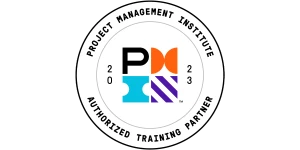Business Process Management 101: BPM Defined
Lean enterprise and business process improvement, business optimization, cost cutting TQM, quality, Six Sigma, business reengineering and other such-like initiatives, falls within the cadre of business process management.
It forms the cradle, feeding ground and impetus for making sense of, improving and capitalizing on the intricacies, dynamic elements and events that occur in our planning, conducting, practice and execution of modern business in the new economy and digital age.
It is about objectively, stepping back, diagnosing, base-lining and analyzing, then streamlining and making things more effective, changing for the better, improving, sustaining, and optimizing the processes and desired results! It attempts to objectively study, assess, measure, adapt, refine, sustain and improve business processes, defying the over-reliance on at times pure speculation, past knowledge, intuition or other ‘expert’ opinion or interpretations. It gives business wings and freedom to pursue a higher calling and standard.
Core business processes like budgeting and even capital expenditures, manufacturing, operations and even transactional, administrative processes from part of this coordinated undertaking and endeavor, introducing it into all areas of the business, conquering new frontiers, moving boundaries and bars, pursuing the gold-standard of business practice (OK, or at least get a better handle on things to start with!) Measurement tools, metrics, assessments, diagnostics, performance statistics all become critical inputs for the successful execution of the business enterprise.
At its truest core and in its purest form, BPM is a philosophy and practical method utilized in business practice today, to bring, enable, plan and structure for and into success. A deliberate attempt and approach or business management strategy, taking proactive, co-creative, data-driven, statistical and scientific method, troubleshooting and problem-solving into the business arena, optimizing efficiencies, minimizing waste and the organizations who choose to pursue it, to new heights of performance excellence and positive business results, growing profit and world-class breakthrough!
Business process management is often seen as all organizational activities that deal with optimizing or adapting these processes, as changing situations and business needs dictate. Continuity, process design, execution and monitoring, results over time, with a forward-looking eye always on the future and opportunity, human-driven processes and even workflow systems, relational data and enterprise content management strategies and solutions all find a home under this encompassing umbrella as does a lot of the quality and continuous improvement methodologies businesses choose to pursue.
The Principles of Business Process Management (BPM) and Business Process Improvement (BPI), is well known. Here is a brief synopsis of the premise, rationale, as well as the key elements of the strategy and approach with their implications for business:
• Changing the status quo, by placing your focus in the right places, at the right time, all the time! Outcomes-based and focused, results-driven and oriented, BPI proposes synergizing and optimizing all steps and elements within and through processes, by focusing on the outcome itself and not as much the routine, accepted specific tasks required to get you there and getting rid of ineffciencies.
• Customer-centric, focused and driven in all activity and endeavor, regardless.
• Efficient, systems and process above all – not automation for example, for the sake of using technology or getting on the band wagon of another ‘fad’ or initiative.
• The value of frequent benchmarking and measuring, taking the pulse, testing the waters, direction and health of your business. Gold-standards and points of reference that are quantifiable, attainable, and realistic are at the order of the day.
• Roles and responsibilities, ownership and accountability for processes and outcomes.
• Process controls and regular progress checks built in, planned, executed well and responded to, including halting the process if it gets of track or it looks like failure is imminent.
• Pursuit of deliberate planning, process-standardization and commonalities and having no mere ad hoc approach to business processes anymore – it simply is NOT accepted practice, considered good enough any more to thrive, saving money and effort as a new economy business!
• Immediate and consistently implementing as well as executing with success over time, sustaining the efforts
• Utility and purpose of accurate metrics and measurements and implementing action based on them.
A final word in closing: In our customer-driven and empowered economy, these approaches, strategies and tools, provides us the context and means whereby we can enable enterprise capabilities and capacities, to unfold into and through business processes across applications and organizational boundaries – pro-active, co-creative and dynamically-organic way, while doing so in planned and disciplined, data-driven, monitoring and objective fashion. Which inevitably leads to us proposing to an extent, yet another refined or even new perspective on things!
Peter Peterka is President of Six Sigma US. For additional information on Six Sigma Green Belt or other Six Sigma Black Belt programs contact Peter Peterka.
Author: Peter Peterka Google
Published 09/3/2008
SixSigma.us offers both Live Virtual classes as well as Online Self-Paced training. Most option includes access to the same great Master Black Belt instructors that teach our World Class in-person sessions. Sign-up today!
Virtual Classroom Training Programs Self-Paced Online Training Programs






